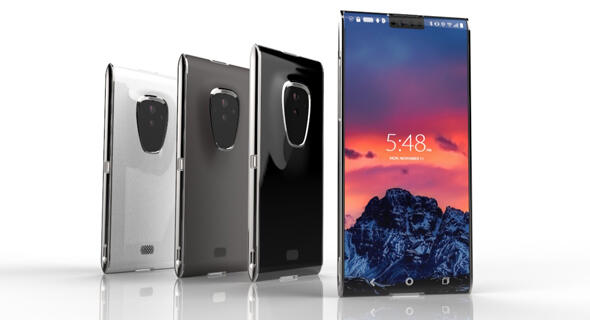Getting your Trinity Audio player ready...
Researchers at Tel Aviv University have discovered the smartphones we carry can be instrumental in gathering meteorological data from the public, providing early warnings for extreme weather events that might trigger fires, and even preventing their spread. The study's findings were recently published in the journal Natural Hazards Earth System Sciences.
Smartphones are equipped with numerous sensors capable of collecting crucial environmental data, such as temperature, barometric pressure, humidity, magnetic field, light, sound, location, acceleration, and gravity. This data aids in navigation, location determination, and real-time alerts for battery overheating and device moisture, without taking up precious storage space.
Forest fires in southern California
(Video: Reuters)
The research demonstrated that intelligently utilizing data from smartphones can enhance early warning systems for forest fires, leveraging the vast amounts of data collected globally. These systems typically lack data in remote forested areas due to the absence of measurement stations.
However, the public carries smartphones equipped with advanced micro-sensors. These sensors operate continuously in the background, and their data can be aggregated and stored. Companies already collect this data for various purposes with user consent. Researchers believe this immense data source—over 7 billion smartphones worldwide as of 2024—can aid in forecasting extreme weather.
Professor Colin Price and doctoral student Hofit Shachaf from the Department of Geophysics at Tel Aviv University's Porter School of Environmental and Earth Sciences utilized data collected via the WeatherSignal app to develop a methodology for assessing forest fire risk based solely on public smartphone data.
A key factor in determining the likelihood of a forest fire is vegetation moisture, which serves as fuel for the fire and is dictated by ambient air temperature and relative humidity—parameters readily available from smartphones.
Shachaf elaborated: "We developed an index based on Vapor Pressure Deficit (VPD), which reflects the relationship between environmental conditions (temperature and humidity) and plant dryness. As atmospheric conditions become hotter and drier, more moisture is drawn from plants, facilitating fire ignition. Conversely, cooler and more humid air prevents ignition. Increasingly, studies use VPD to predict forest fire danger, though it is typically calculated using data from local weather stations. Our innovation lies in using smartphone data, passively collected, to calculate VPD over vast areas, providing critical insights for fire risk assessment."
Smartphone data, however, can contain errors. Temperature might reflect office air conditioning, and humidity sensors could detect bathroom moisture during a shower. Thus, it was necessary to calibrate smartphone data using commercial meteorological stations.
The research revealed that these calibrations were relatively straightforward, needing only a one-time adjustment to correct smartphone readings. After calibrating or "training" the data, researchers focused on two significant forest fire case studies: the fires in Israel in November 2016 and the massive fire in Portugal in July 2013. Surprisingly, smartphone data collected from the public revealed significant anomalies in the VPD index before and during these major fires.
Shachaf added: "It's surprising, but despite each smartphone having its own errors and biases, large datasets from numerous smartphones allow us to average out the errors, yielding useful data. The volume of data overcomes individual smartphone issues."
Professor Price concluded: "Given the rapid proliferation of smartphones globally, we propose leveraging this data source to provide enhanced early warnings to the public and emergency managers about impending natural disasters. Improved early warnings can prevent natural hazards from escalating into disasters."
Get the Ynetnews app on your smartphone:





